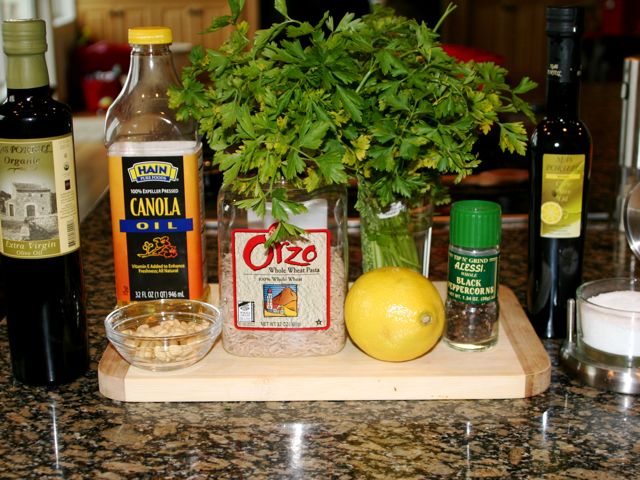
reference-image, l
(post, Hank Sawtelle)
When it comes to buying prepared foods at the grocery store, there's always a trade-off between convenience and added cost. There seems to be an ever-growing selection of “value-added” prepared items presented in refrigerated cases at the store. While some prepared foods might be labor-intensive, demand exotic ingredients, or require dirtying extra kitchen appliances, others — such as pasta and grain salads — are relatively quick and easy to make at home. So how much extra do we pay for the convenience of picking up a pre-made lunch entrée or side dish for a family meal? I decided to do the math and find out. (Yes, I am that kind of nerd.) Using the ingredient list posted by the store (and printed on the price tag/label), I threw together a lemon-orzo salad very similar to the one sold at my local grocery store's prepared foods counter for $5.99 per pound. (I have seen prices on prepared salads much higher at high-end local and national chains, but this is a good baseline example.) I've listed the approximate weights and retail prices (from the same store) for the ingredients in the table below: |!Ingredients|!Weight (oz.)|!Price|!Value of Ingredients (if purchased separately)| |Orzo (1 cup/5.5 oz. dry)|12.5|$0.27/oz. (dry)|$1.47| |Pine nuts|0.5|$1.31/oz.|$0.66| |Italian parsley|0.1|$1.49/oz.|$0.15| |Olive oil|0.5|$0.53/oz.|$0.27| |Canola oil|1|$0.22/oz.|$0.22| |Lemon olive oil|0.1|$1.40/oz.|$0.14| |Lemon (juice and zest of 1)|1.5|$0.75 each|$0.75| |Salt and pepper|To taste|$0.01| |||| |!Totals|16.2 oz| |$3.66| |||| |Prepared salad price/lb.|| |$5.99| |Markup percentage|| |64%| So at this market, I am paying well over $2 per pound, or a markup of more than 60 percent, for them to make me a simple pasta salad. The amount of labor involved in making these kinds of dishes is relatively light. In fact, if you're already set up to cook something else (like dinner), it's very easy to add on a grain or pasta salad. Just measure out the water and bring to a simmer, and once your grain or pasta is done, it's a matter of tossing with the other ingredients (many of which can be cribbed from your dinner prep) and adjusting the seasonings. [%image reference-image float=right width=400 caption="Simple ingredients for orzo salad."] Most of these salads eat well hot or cold, so you can serve some as a side dish with the meal you're cooking, and cool and store the rest for later. In addition, when making these dishes at home, you can include personal tweaks. Maybe you love toasted pine nuts or hate dried currants, for example. The one advantage the grocery store has over the home cook is variety. Because of the volume of business they do, markets can afford to have large batches of lots of different salads on hand. (Cooked grains really don't keep for more than a week in the fridge, so this is hard to duplicate at home.) You can pick up a container of three or four different prepared salads to enjoy throughout the week instead of ending up with many servings of the same salad. It's up to you to decide whether that's worth the steep markup, not to mention all of those wasteful plastic containers. Here are a few Culinate recipes to get you started trimming some serious fat from your grocery tab: Farro Salad with Tomato, Red Onion, and Green Olives, Orzo and Asparagus Salad, and Quinoa Salad with Lemon Dressing.

reference-image, l